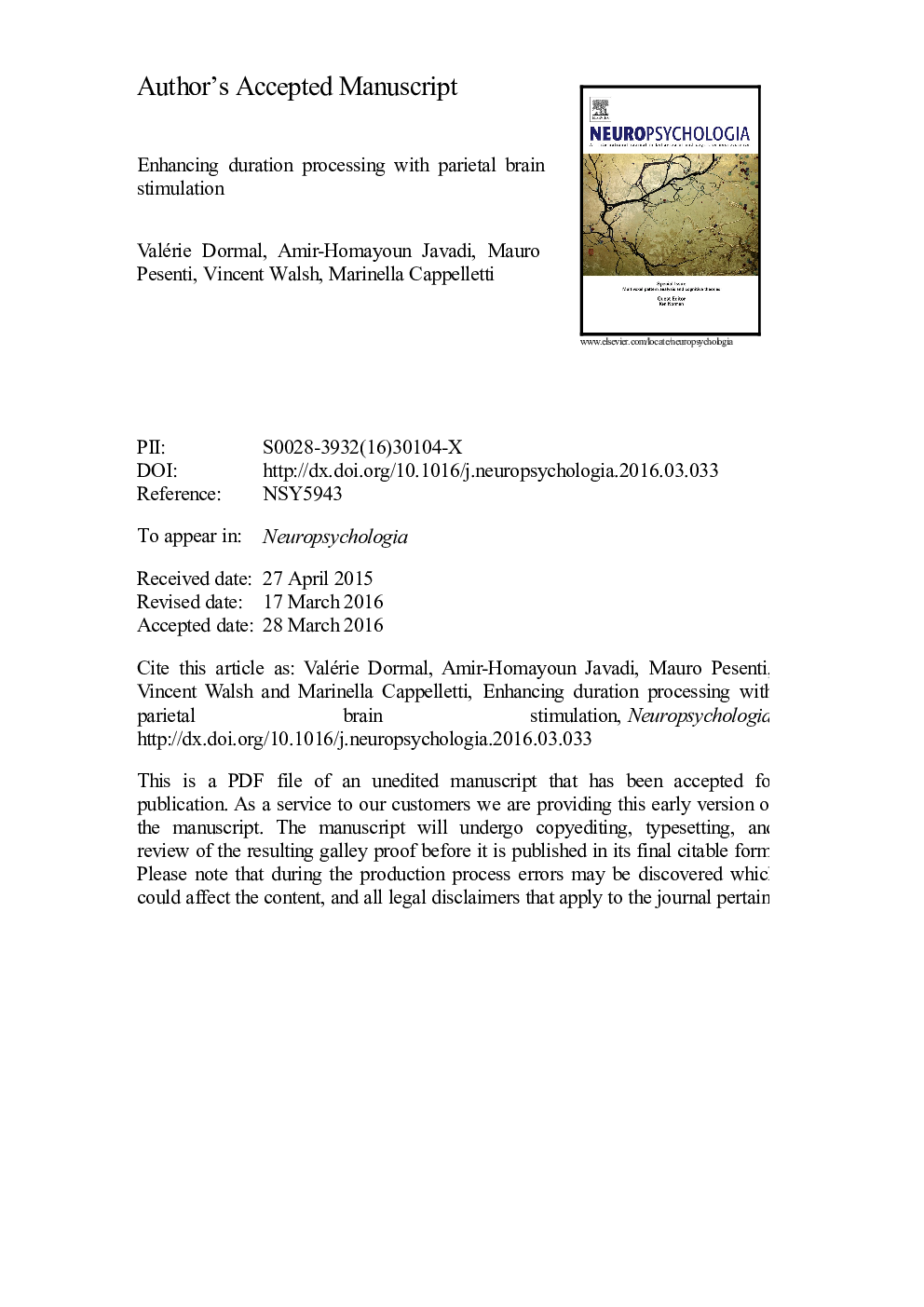| Article ID | Journal | Published Year | Pages | File Type |
|---|---|---|---|---|
| 7319251 | Neuropsychologia | 2016 | 23 Pages |
Abstract
Numerosity and duration are thought to share common magnitude-based mechanisms in brain regions including the right parietal and frontal cortices like the supplementary motor area, SMA. Numerosity and duration are, however, also different in several intrinsic features. For instance, in a quantification context, numerosity is known for being more automatically accessed than temporal events, and durations are by definition sequential whereas numerosity can be both sequential and simultaneous. Moreover, numerosity and duration processing diverge in terms of their neuronal correlates. Whether these observed neuronal specificities can be accounted for by differences in automaticity or presentation-mode is however not clear. To address this issue, we used brain stimulation (transcranial random noise stimulation, tRNS) to the right parietal cortex or the SMA combined with experimental stimuli differing in their level of automaticity (numerosity and duration) and presentation mode (sequential or simultaneous). Compared to a no stimulation group, performance changed in duration but not in numerosity categorisation following right parietal but not SMA stimulation. These results indicate that the right parietal cortex is critical for duration processing, and suggest that tRNS has a stronger effect on less automatic processes such as duration.
Keywords
Related Topics
Life Sciences
Neuroscience
Behavioral Neuroscience
Authors
Valérie Dormal, Amir-Homayoun Javadi, Mauro Pesenti, Vincent Walsh, Marinella Cappelletti,
